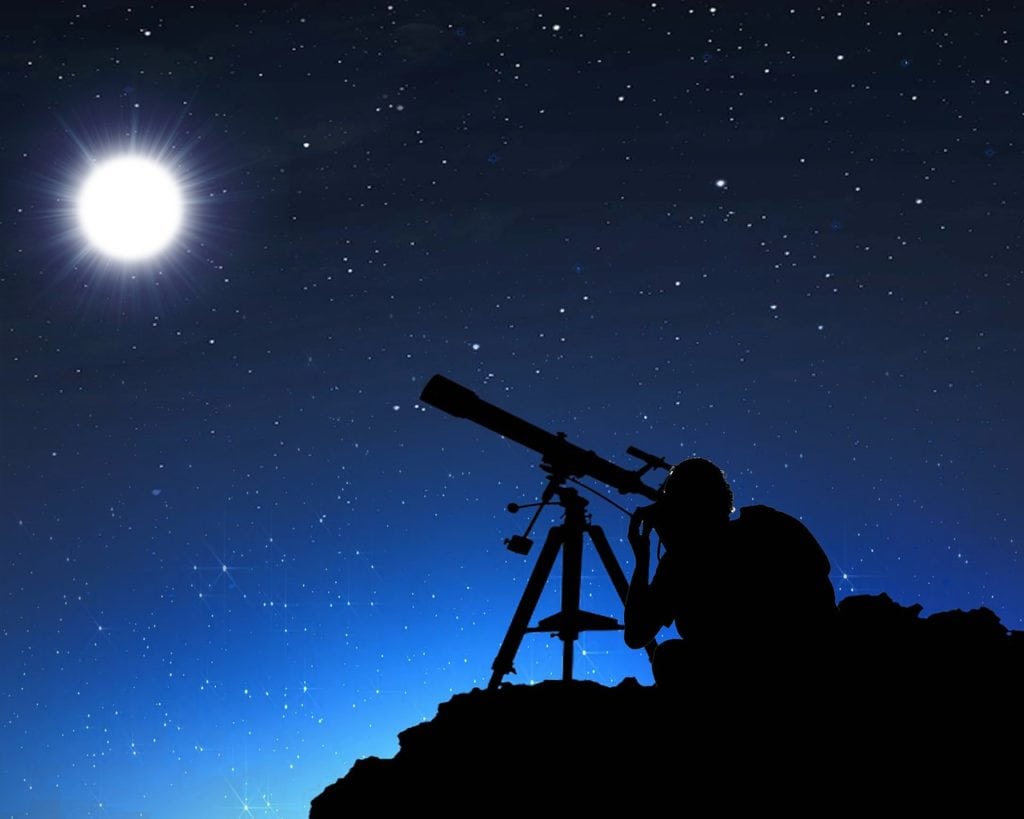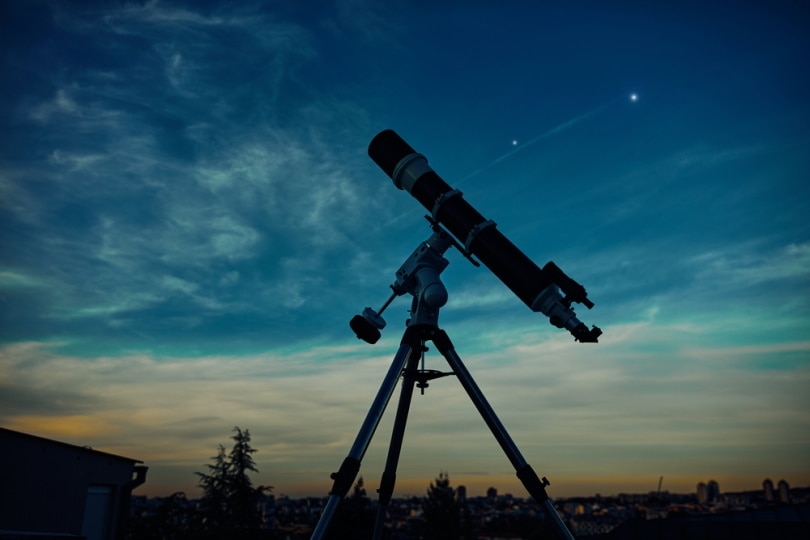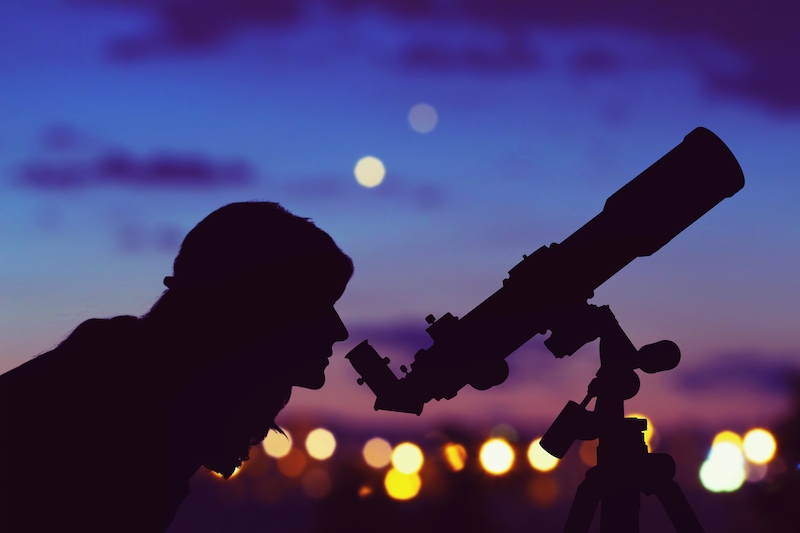What Does a Star Look Like Through a Telescope? What can you expect to see?
Last Updated on

Since the beginning of time, humans have been drawn to the fiery lights scattered throughout the night sky. It’s no wonder that humans are drawn to the mysterious expanse of the night sky, as most of the elements that make up our bodies came from the formation and violent deaths of stars over billions of years. It is no exaggeration to say that humans, and everything around us, are made of stardust.
By observing the stars, we can learn more about our place in the universe and the natural laws that govern our existence. Using a telescope, we can peer into the night sky and get a better view of the stars we live under, and in some cases, we can peer far enough to effectively look back in time. We can see a variety of celestial bodies with a telescope, but stars are fascinating and can vary in how they look.

What to Expect
Knowing where and what to look for is paramount when you want to observe a particular celestial object. Many may approach a nighttime observation session expecting to see colorful and detailed star systems reminiscent of NASA images. Unfortunately, this is not the case, but stargazing can still prove to be really exciting.

When you look through a telescope, stars get magnified a little but otherwise look like the bright points of light we are used to. If a star is bright enough, you may even be able to witness faint shades of blue, red, and yellow. The hottest stars are blue, while the relatively cooler stars assume a red hue. The colorful images taken by NASA are usually captured by space telescopes and are generally long-exposure photographs. For this reason, the telescope is able to collect far more light and pull the details and intricate colors out of stars, galaxies, and nebulae.
Observing a star with a telescope requires some practice and a steady hand, as even the slightest misalignment can lead to low-quality images. However, unwanted optical effects are almost always guaranteed, so it is essential to understand why they happen.
Diffraction Spikes
Diffraction spikes take the shape of sharp lines emanating from stars, making them look as if they have rays. Diffraction spikes do not actually exist on stars and are a product of using reflector telescopes. There are many configurations of diffraction spikes that align with the shape of your telescope’s spider vanes.

The spider vanes are used to hold your telescope’s secondary mirror in place and provide an obstruction within the optical tube, which causes the diffraction pattern. There are all sorts of spider vanes available on the market, with each model designed to mitigate certain effects.
Coma
When viewed through a telescope, certain stars may appear to have a tail like a comet or appear more elliptical in shape. This distortion effect is called coma and results from variations in your telescope’s magnification. This effect is almost inevitable and is a problem even in large, high-quality, and perfectly aligned telescopes.
The most affected telescopes are those with low focal ratios, such as Newtonian telescopes. Coma gets worse as the source gets further from the center of the field. However, coma correctors are available and can help stars look sharper by forcing off-axis light beams to converge properly.


Final Thoughts
In summary, observing the night sky with a telescope is a fantastic opportunity and a great hobby to pick up. Telescopes are great for observing our solar system’s resident star, double stars, constellations, and other celestial bodies. In addition, telescopes allow us to see some colorful stars, which allows us to understand how hot they are.
Once you understand the various optical effects that change how stars look through telescopes, you’ll be well on your way to uncovering the mysteries of the heavenly expanses. Many modern telescopes can even be pointed at specific stars or constellations using mobile apps, making it so much easier to see the most exciting things in the sky.
You might also like:
Featured Image Credit: Pixabay
Table of Contents
About the Author Robert Sparks
Robert’s obsession with all things optical started early in life, when his optician father would bring home prototypes for Robert to play with. Nowadays, Robert is dedicated to helping others find the right optics for their needs. His hobbies include astronomy, astrophysics, and model building. Originally from Newark, NJ, he resides in Santa Fe, New Mexico, where the nighttime skies are filled with glittering stars.
Related Articles:
What Is the Best Binocular Magnification for Hunting? Optical Features Explained
Can You Use Binoculars to Look At Stars? How to Choose the Right Pair
How to Clean a Refractor Telescope: Step-by-Step Guide
How to Clean a Telescope Eyepiece: Step-by-Step Guide
How to Clean a Rifle Scope: 8 Expert Tips
Monocular vs Telescope: Differences Explained (With Pictures)
What Is a Monocular Used For? 8 Common Functions
How to Clean a Telescope Mirror: 8 Expert Tips
